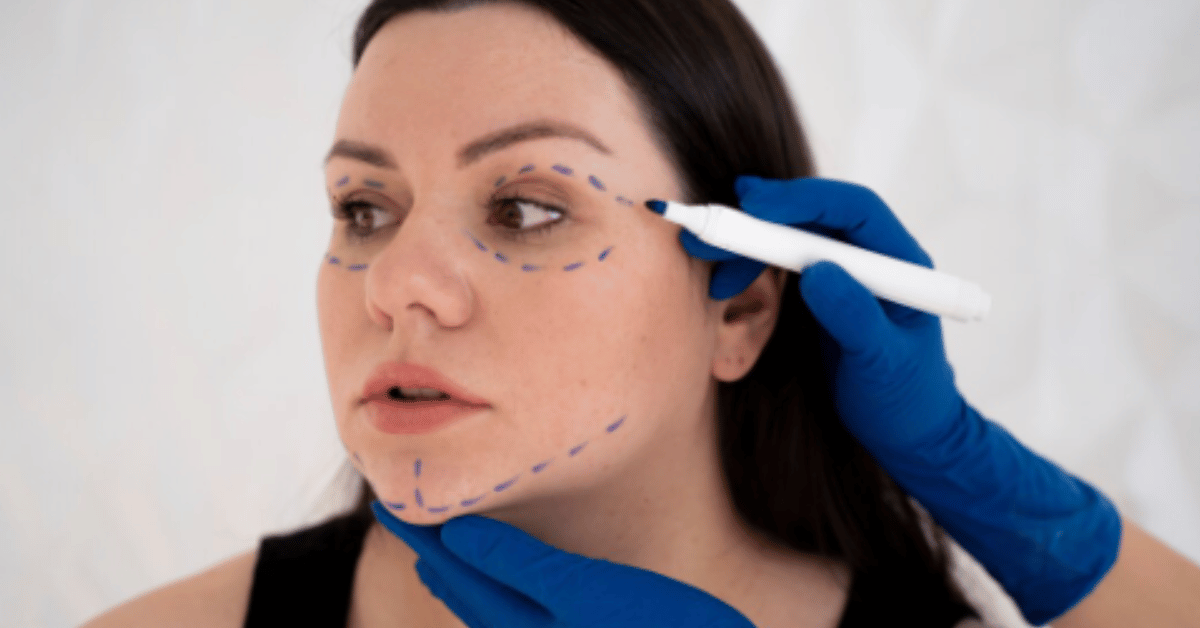When people seek facial rejuvenation today, they often want results without the downtime or invasiveness of surgery. PDO threads, or polydioxanone threads, have emerged as a leading solution in this arena. These dissolvable sutures, placed strategically under the skin, stimulate collagen and provide a subtle but noticeable lift. For those searching about PDO threads, the intent is clear: to understand what they are, how they work, their benefits, risks, costs, and whether they might be the right choice compared to fillers or surgical facelifts. In the first hundred words, it is worth clarifying that PDO threads are minimally invasive, FDA-cleared, and offer a middle ground between cosmetic injections and more aggressive plastic surgery. They restore skin firmness while encouraging long-term tissue repair, making them an attractive option for individuals looking to refresh their appearance without a scalpel. This article will dive into every aspect of PDO threads, providing readers with up-to-date, reliable, and detailed knowledge.
What Are PDO Threads?
PDO threads are synthetic, absorbable sutures made from polydioxanone, a material used in medical settings for decades, especially in cardiothoracic surgery. In aesthetic medicine, these threads are carefully inserted into the skin to create scaffolding that supports tissue. Over time, the body naturally absorbs the threads, but their placement triggers a biological process that continues to benefit the skin: the stimulation of collagen and elastin production. This dual effect—mechanical lift and biological rejuvenation—sets PDO threads apart from topical treatments or dermal fillers. Patients typically see an immediate lifting effect followed by gradual improvements as new collagen forms, leading to firmer, smoother, and more youthful-looking skin. The versatility of PDO threads allows them to be used on the face, neck, and even body areas, offering subtle contouring and tightening.
Types of PDO Threads
PDO threads are not one-size-fits-all; they come in different structures designed for varying results. Smooth threads are thin and work best for collagen stimulation, particularly in delicate areas like under the eyes. Barbed or cog threads have tiny hooks or spines that grab and reposition sagging skin, making them suitable for lifting the cheeks or jawline. Screw or twisted threads create volume in areas that have lost fat or density, providing a plumping effect. Each type can be combined in a treatment plan depending on patient goals, which is why consultation with an experienced provider is critical. The procedure’s customization ensures that PDO threads can adapt to individual concerns, from fine lines to noticeable laxity.
Table 1: Types of PDO Threads and Their Primary Uses
| Type of PDO Thread | Structure | Best Use Cases | Longevity of Results |
|---|---|---|---|
| Smooth Threads | Straight, fine | Collagen stimulation, fine lines | 6–8 months |
| Barbed Threads | With hooks or cogs | Lifting cheeks, jowls, brow | 12–18 months |
| Screw Threads | Twisted or spiral | Volume restoration, contouring | 9–12 months |
| Combination Plan | Mixed types | Full-face rejuvenation | 12–24 months |
How PDO Threads Work in the Skin
The science of PDO threads lies in controlled injury and repair. By inserting threads under the skin, practitioners trigger a mild healing response. The body perceives the threads as foreign material and activates fibroblasts to produce collagen, elastin, and hyaluronic acid around them. As the threads dissolve—usually over six to nine months—the newly formed tissue remains, preserving the tightened and lifted effect. This natural process is why results continue to improve for several months post-procedure, even as the threads themselves disappear. Unlike fillers, which add volume, PDO threads rely on the body’s own regenerative capacity, making them a biologically harmonized treatment.
Areas Commonly Treated with PDO Threads
PDO threads are versatile, and their use extends beyond facial lifting. In cosmetic practices, they are commonly placed in the mid-face to address sagging cheeks, along the jawline to refine contours, and beneath the chin to reduce laxity. The brow area can also benefit, producing a subtle lift sometimes dubbed the “fox eye” look. Beyond the face, PDO threads can tighten the neck, arms, abdomen, and even knees. The non-surgical nature makes them appealing to patients hesitant about invasive surgery, while their broad applicability makes them a flexible tool in aesthetic medicine.
Table 2: Popular Treatment Areas for PDO Threads
| Treatment Area | Primary Benefit | Average Duration of Results |
|---|---|---|
| Jawline | Improved contour, reduced jowls | 12–18 months |
| Cheeks | Lifted mid-face, reduced sagging | 12–18 months |
| Neck | Tighter skin, smoother lines | 12–15 months |
| Brows/Eyes | Subtle lift, youthful expression | 9–12 months |
| Abdomen | Mild tightening post-weight loss or pregnancy | 8–12 months |
The Procedure: What to Expect
Undergoing PDO threads is relatively quick, usually lasting between 30 minutes to an hour. Local anesthesia is applied to minimize discomfort, and the threads are introduced via fine needles or cannulas. Patients often describe the sensation as pressure rather than pain. Once in place, the threads provide immediate support, and mild swelling or bruising may occur for a few days. Most people resume normal activities within 24–48 hours, making PDO threads appealing for those with busy lifestyles. Unlike surgical facelifts, there are no large incisions, stitches, or long recovery periods. The straightforward nature of the treatment underscores why PDO threads have grown rapidly in popularity among patients seeking minimally invasive rejuvenation.
Benefits of PDO Threads
The appeal of PDO threads lies in their unique combination of immediate and long-term benefits. Firstly, they provide instant lifting, which is psychologically rewarding for patients eager to see changes. Secondly, their collagen-stimulating properties mean the skin continues to improve over time. Another advantage is versatility: PDO thread can be combined with other treatments like fillers, Botox, or skin resurfacing for comprehensive facial rejuvenation. Safety is also an important factor; since PDO has a long history of safe use in medicine, it poses minimal risks of adverse reactions. Lastly, the procedure is relatively affordable compared to surgery, expanding access to a broader group of patients who might otherwise avoid aesthetic treatments.
Risks and Considerations
While PDO threads are safe in skilled hands, risks exist. Bruising, swelling, or mild asymmetry can occur but usually resolve quickly. Rarely, threads may become visible under thin skin or break prematurely, requiring correction. The outcome also depends heavily on practitioner expertise. As one dermatologist puts it, “PDO threads are as much an art as they are a science—placement and technique matter as much as the product itself.” Patients should carefully select experienced providers, ask about credentials, and discuss realistic expectations. Unlike surgery, results are not permanent, so patients must be prepared for maintenance treatments.
Comparing PDO Threads to Other Treatments
Many people considering PDO threads are also weighing fillers or facelifts. Fillers add volume, but they do not lift sagging skin; PDO thread, on the other hand, reposition tissue while enhancing firmness. Surgical facelifts provide dramatic, long-lasting results, but with higher risks, costs, and downtime. PDO thread occupy the middle ground, offering moderate improvements without the invasiveness of surgery. For younger patients with mild to moderate skin laxity, threads may suffice, while older patients with advanced sagging might consider surgery. In aesthetic medicine, there is no one-size-fits-all; the choice depends on age, goals, and tolerance for downtime.
Longevity of Results
PDO thread are not permanent, but their results are respectable. Most patients enjoy improvements lasting 12 to 18 months, depending on the type of thread and placement area. Factors such as age, skin quality, lifestyle, and aftercare play a role. As the threads dissolve, collagen scaffolding remains, meaning patients often retain some improvement beyond the initial window. Maintenance sessions every year or two can extend benefits, making PDO thread a manageable and repeatable option. They are not a replacement for a facelift, but for those seeking a subtle refresh, the duration of results is sufficient.
Aftercare and Recovery
Post-procedure care is straightforward. Patients are advised to avoid strenuous exercise, exaggerated facial movements, or pressing on the treated areas for about a week. Sleeping on the back can prevent undue pressure, and skincare should remain gentle to allow healing. While mild discomfort or bruising is normal, these fade quickly. Importantly, collagen production continues for months, meaning patience is rewarded with gradual, natural improvements. As one practitioner notes, “PDO thread reward those who understand that beauty can be both immediate and evolving.”
The Cost of PDO Threads
Prices vary widely, depending on geography, practitioner expertise, and the number of threads used. On average, a treatment can range from $700 to $4,500. Full-face lifts with multiple threads sit at the higher end, while small touch-ups cost less. Compared to surgical facelifts, which can exceed $15,000, PDO thread are relatively accessible. Insurance does not cover cosmetic procedures, so patients should plan financially for both the initial treatment and possible maintenance. Transparency during consultation is key; practitioners should provide a clear estimate and explain how many sessions might be required for optimal results.
The Future of PDO Threads
As technology evolves, PDO threads continue to improve. Variations in thread design, such as stronger barbs or longer-lasting materials, are being explored. Additionally, practitioners are combining threads with regenerative treatments like platelet-rich plasma (PRP) or exosome therapy to enhance collagen stimulation. The growing acceptance of non-surgical treatments ensures PDO threads will remain a staple in aesthetic medicine. They embody the trend toward minimally invasive yet effective solutions, appealing to patients who prioritize subtle, natural-looking results over dramatic transformations.
Conclusion
PDO threads have transformed the landscape of aesthetic medicine by offering a safe, effective, and minimally invasive option for lifting and rejuvenation. They meet the demand for subtlety, combining immediate lifting with long-term collagen stimulation. While not a replacement for surgery, they fill an important gap between injectables and facelifts. Patients benefit from quick recovery, versatile applications, and results that evolve naturally over time. Risks exist, but in experienced hands, PDO threads are highly rewarding. As one surgeon remarked, “Beauty in the modern age is not about looking different; it’s about looking like yourself—only refreshed.” For those considering PDO threads, understanding the science, procedure, benefits, and limitations helps set realistic expectations. Ultimately, this treatment reflects the broader shift in aesthetics: away from extremes and toward balance, where rejuvenation blends seamlessly with authenticity.
FAQs
Q1: How long do PDO threads last?
Results generally last 12–18 months, though collagen stimulation may extend benefits beyond the threads themselves.
Q2: Are PDO thread painful?
The procedure is performed with local anesthesia, and most patients report only mild discomfort rather than pain.
Q3: Can PDO threads replace a facelift?
No, PDO threads provide moderate lifting. Surgery remains necessary for severe sagging, but threads suit mild to moderate cases.
Q4: What age is ideal for PDO threads?
Most patients are between 30 and 55 years old, seeking early intervention for skin laxity rather than dramatic correction.
Q5: Are there risks of infection?
Yes, as with any procedure, but risks are low when performed in sterile settings by trained professionals.











